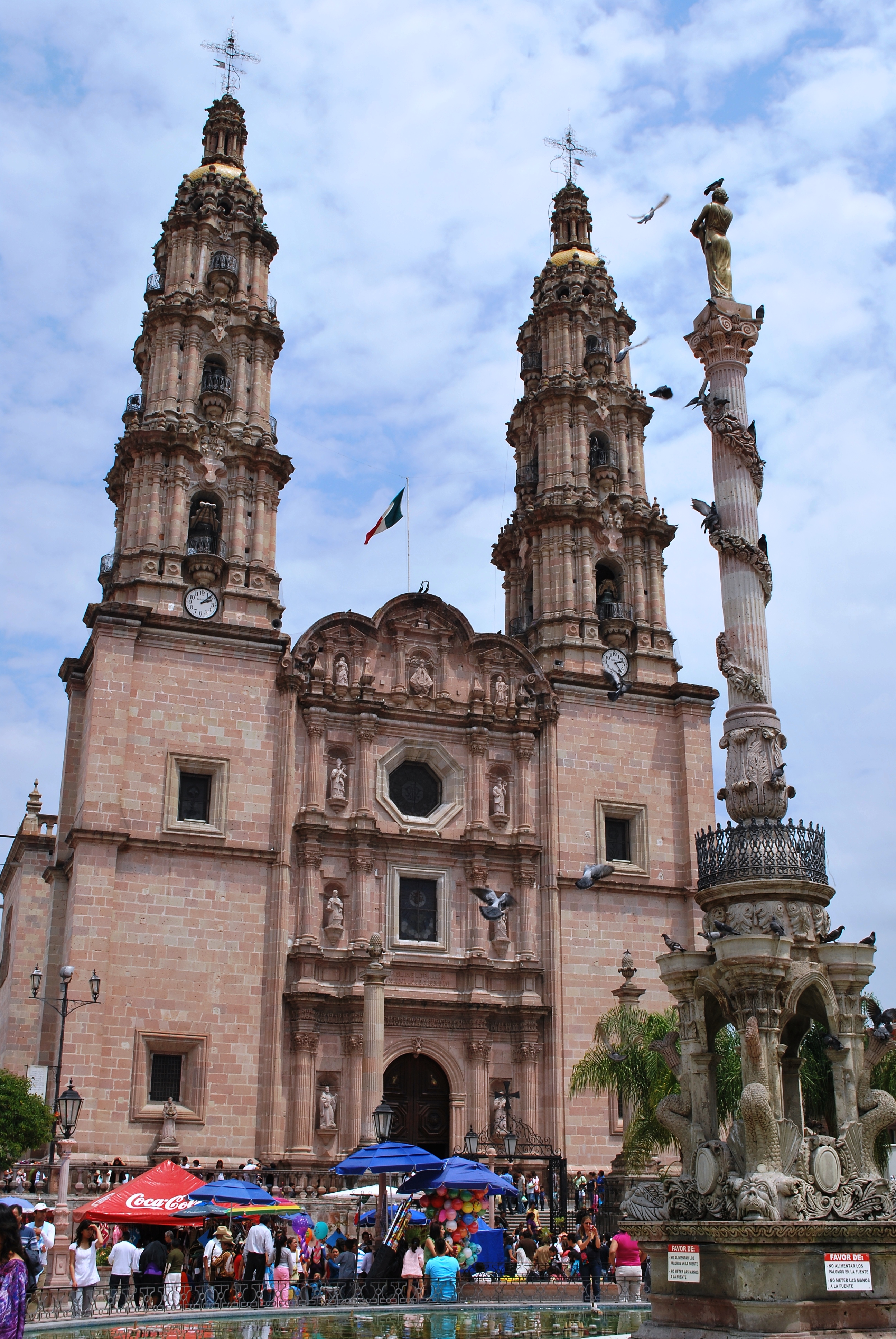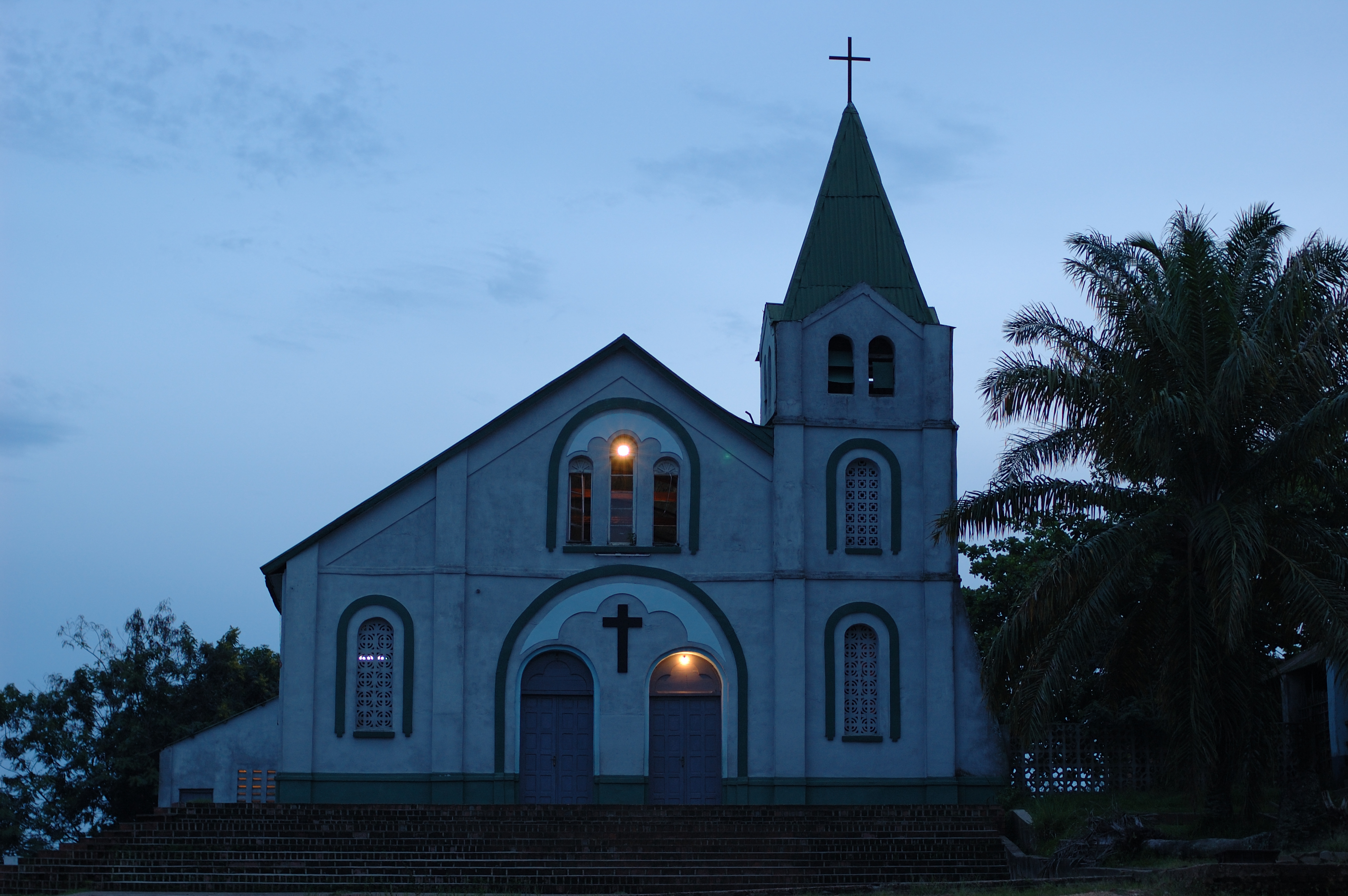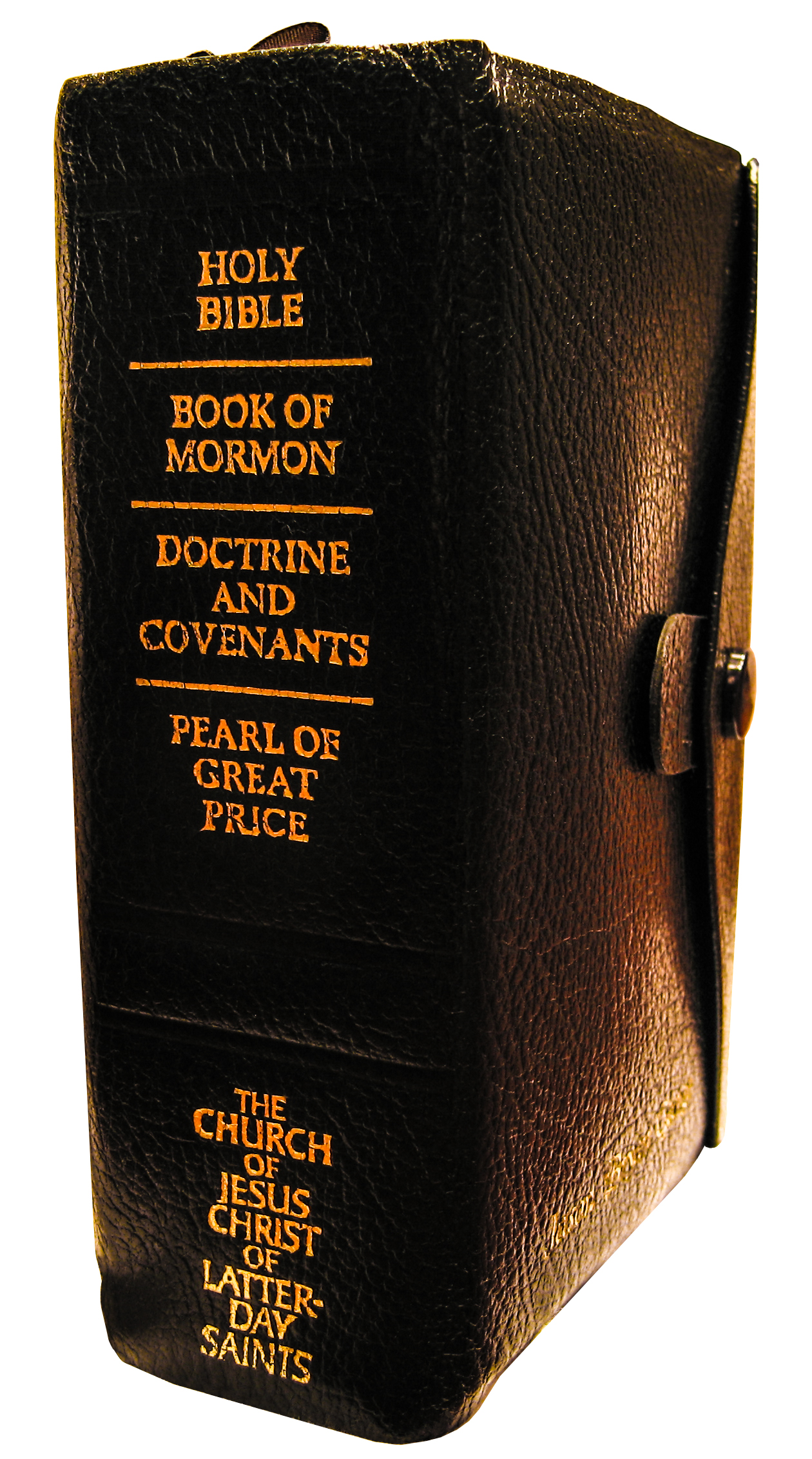|
Hedrickites
The Church of Christ, informally called Hedrickites and the Church of Christ (Temple Lot), is a denomination of the Latter Day Saint movement headquartered in Independence, Missouri, on what is known as the Temple Lot. The nickname for members of the church comes from the surname of Granville Hedrick, who was ordained as the church's leader in July 1863. Unlike the Church of Jesus Christ of Latter-day Saints (LDS Church) and Community of Christ, the Temple Lot church rejects the office of prophet or president, being instead led by its Quorum of Twelve Apostles. The church also rejects the doctrines of baptism for the dead and celestial marriage promulgated by the Utah-based LDS Church, as well as the Doctrine and Covenants and Pearl of Great Price. While once avidly engaged in dialogue with other Latter Day Saint factions, the church no longer has any official contact with any other organization. It is notable for its sole ownership of the Temple Lot, which it has held for nearly ... [...More Info...] [...Related Items...] OR: [Wikipedia] [Google] [Baidu] |
Church Of Christ (Fettingite)
The Church of Christ, informally referred to as the Fettingites, is a denomination within the Latter Day Saint movement which split from the Church of Christ—informally known as "Hedrickites"— in late 1929. The faction was formally established on April 8, 1930, and an Associated Press report published in ''The New York Times'' and ''Los Angeles Times'' April 7, 1930, describes it as having been briefly named "The Church of Jesus Christ" and later, the "Church of Christ". It is informally referred to as the "Church of Christ (Fettingite)", after its founder, Otto Fetting, but this sect has never officially been named as such. Otto Fetting, an Apostle in the Church of Christ, was the alleged recipient of a series of messages delivered by John the Baptist concerning construction of a temple on the Temple Lot, along with other aspects of Hedrickite doctrine and practice. The rejection of his "Twelfth Message" by a majority vote of his fellow Apostles in October 1929 led to a split i ... [...More Info...] [...Related Items...] OR: [Wikipedia] [Google] [Baidu] |
Granville Hedrick
Granville Hedrick (September 2, 1814 – August 22, 1881) was a leader in the Latter Day Saint movement after the 1844 succession crisis. In 1863, Hedrick became the founding leader of the Church of Christ (Temple Lot), which is one of many churches that claim to be a continuation of the Church of Christ founded by Joseph Smith in 1830. Latter Day Saint church membership In 1843 at Woodford County, Illinois, Hedrick was baptized into the Church of Jesus Christ of Latter-day Saints by Hervey Green, a missionary for the church. Green also ordained Hedrick to the priesthood office of elder shortly after he was baptized. Soon after his baptism, he became dissatisfied with the church and moved to Galena to work in the lead mines. After Smith's death in June 1844, a number of Latter Day Saint leaders, including Brigham Young, Sidney Rigdon, and James Strang, claimed to be Smith's rightful successor as leader of the Church of Jesus Christ of Latter Day Saints, which Smith had found ... [...More Info...] [...Related Items...] OR: [Wikipedia] [Google] [Baidu] |
Temple Lot
The Temple Lot, located in Independence, Missouri, is the first site to be dedicated for the construction of a temple in the Latter Day Saint movement. The area was dedicated on August 3, 1831, by the movement's founder, Joseph Smith Jr., and purchased on December 19, 1831, by his colleague Edward Partridge to be the center of the New Jerusalem or " City of Zion" after he received a revelation stating that it would be the gathering spot of the Latter Day Saints during the last days. H. Michael Marquardt"The Independence Temple of Zion" 1997. Retrieved January 24, 2008. The most prominent section of the Temple Lot is currently an open, grass-covered field occupied in its northeast corner by a few trees and the headquarters of the Church of Christ (Temple Lot), which is not considered a temple by adherents of that sect. No other structures (with the exception of monuments, markers and signposts) exist on the section, although numerous important structures exist on the section ... [...More Info...] [...Related Items...] OR: [Wikipedia] [Google] [Baidu] |
Latter Day Saint Movement
The Latter Day Saint movement (also called the LDS movement, LDS restorationist movement, or Smith–Rigdon movement) is the collection of independent church groups that trace their origins to a Christian Restorationist movement founded by Joseph Smith in the late 1820s. Collectively, these churches have over 16 million members, although about 98% belong to the Church of Jesus Christ of Latter-day Saints (LDS Church). The predominant theology of the churches in the movement is Mormonism, which sees itself as restoring the early Christian church with additional revelations. A minority of Latter Day Saint adherents, such as members of Community of Christ, have been influenced by Protestant theology while maintaining certain distinctive beliefs and practices including continuing revelation, an open canon of scripture and building temples. Other groups include the Remnant Church of Jesus Christ of Latter Day Saints, which supports lineal succession of leadership from Smit ... [...More Info...] [...Related Items...] OR: [Wikipedia] [Google] [Baidu] |
Religion In Canada
Religion in Canada encompasses a wide range of groups and beliefs. Christianity is the largest religion in Canada, with Catholicism being its largest denomination. Christians, representing 53.3% of the population in 2021, are followed by people having no religion at 34.6% of the total population. Other faiths include Islam (4.9%), Hinduism (2.3%), Jainism (0.1%), Sikhism (2.1%), Buddhism (1.0%), Judaism (0.9%), and Indigenous spirituality (0.2%). Rates of religious adherence are steadily decreasing. The preamble to the Canadian Charter of Rights and Freedoms refers to God. The monarch carries the title of "Defender of the Faith". However, Canada has no official religion, and support for religious pluralism and freedom of religion is an important part of Canada's political culture. Before the European colonization, a wide diversity of Aboriginal religions and belief systems were largely animistic or shamanistic, including an intense tribal reverence for spirits and nature ... [...More Info...] [...Related Items...] OR: [Wikipedia] [Google] [Baidu] |
Religion In Mexico
The Catholic branch of Christianity is the dominant religion in Mexico, representing 78% of the total population as of 2020. In recent decades the share of Catholics has been declining, due to the growth of other Christian denominations – especially various Protestant churches, Jehovah's Witness and Mormonism – which now constitute 9.7% of the population, and non-Christian religions. Conversion to non-Catholic denominations has been considerably lower than in Central America, and central Mexico remains one of the most Catholic areas in the world. Mexico is a secular country and has allowed freedom of religion since the mid-19th century. Mainline Protestant denominations and the open practice of Judaism established themselves in the country during that era. Modern growth has been seen in Evangelical Protestantism, Mormonism and in folk religions, such as ''Mexicayotl''. Buddhism and Islam have both made limited inroads through immigration and conversion. Religion and ... [...More Info...] [...Related Items...] OR: [Wikipedia] [Google] [Baidu] |
Religion In Honduras
The predominant religion in Honduras is Christianity, representing 87% of the total population according to a 2017 estimate. The country is secular and the freedom of religion is enshrined in the nation's constitution. The pre-Hispanic peoples that lived in actual Honduras were primarily polytheistic Maya and other native groups. In the 16th century, Roman Catholicism was introduced by the Spanish Empire and still holds a 46% share of the population. Protestantism accounts for 41% of the country's population. History Ancient religion The Maya religion was the ancient one. It was practiced a lot in the timeline of the 4th and 7th century, AD. It was practiced in some parts of Central and South America, and it was based on polytheistic beliefs and had to do with a big number of rituals with occasional animals and maybe even human sacrifices. Post-colonial religion The second Roman Catholic Mass celebrated in the continental New World was on August 13, 1502, in Punta Caxinas, tw ... [...More Info...] [...Related Items...] OR: [Wikipedia] [Google] [Baidu] |
Religion In Nigeria
Religion in Nigeria (being the most populous African country with a population of over 225 million as of 2022) is said to be different and diverse. The country is home to some of the world's largest Christian and Muslim populations, simultaneously. Nigeria is divided roughly in half between Muslims, who live mostly in the north, and Christians, who live mostly in the south east; indigenous religions, such as those native to the Igbo and Yoruba ethnicities, are in the minority. The Christian share of Nigeria's population is on decline due to lower fertility rate compared to Muslims in the north. Most Nigerian Christians are Protestant (broadly defined), though about a quarter are Catholic. The majority of Nigerian Muslims are either Sunni or non-denominational Muslims. Many Sunni Muslims are members of Sufi brotherhoods or Tariqa. Most Sufis follow the Qadiriyya, Tijaniyyah or Mouride movement. A significant Shia minority also exists (''see Shia in Nigeria''). There are also ... [...More Info...] [...Related Items...] OR: [Wikipedia] [Google] [Baidu] |
Religion In Kenya
The predominant religion in Kenya is Christianity, which is adhered to by an estimated 85.52% of the total population. Islam is the second largest religion in Kenya, practised by 10.91 percent of Kenyans. Other faiths practised in Kenya are Baháʼí, Buddhism, Hinduism and traditional religions. Kenya is a secular country and the freedom of religion is enshrined in the nation's constitution. Statistics Census figures from 2009 and 2019: Census figures Christianity Roman Catholicism was first brought to Kenya in the fifteenth century by the Portuguese, and was spread rapidly during the 20th century by missionaries. In 2019, the Roman Catholic Church made up 20.6% of the population, about 9.7 million Kenyans. In the same year, over 60% of Kenyans identified as Protestant, Evangelical, or members of African instituted churches. Denominations include the Anglican Church of Kenya, Africa Inland Mission, the Presbyterian Church of East Africa, Evangelical Lutheran Chur ... [...More Info...] [...Related Items...] OR: [Wikipedia] [Google] [Baidu] |
Religion In Malawi
Malawi (; or aláwi Tumbuka: ''Malaŵi''), officially the Republic of Malawi, is a landlocked country in Southeastern Africa that was formerly known as Nyasaland. It is bordered by Zambia to the west, Tanzania to the north and northeast, and Mozambique to the east, south and southwest. Malawi spans over and has an estimated population of 19,431,566 (as of January 2021). Malawi's capital (and largest city) is Lilongwe. Its second-largest is Blantyre, its third-largest is Mzuzu and its fourth-largest is its former capital, Zomba. The name ''Malawi'' comes from the Maravi, an old name for the Chewa people who inhabit the area. The country is nicknamed "The Warm Heart of Africa" because of the friendliness of its people. The part of Africa now known as Malawi was settled around the 10th century by migrating Bantu groups . Centuries later, in 1891, the area was colonised by the British and became a protectorate of the United Kingdom known as Nyasaland. In 1953, it became a ... [...More Info...] [...Related Items...] OR: [Wikipedia] [Google] [Baidu] |
Religion In The Democratic Republic Of The Congo
Christianity is the predominant religion in the Democratic Republic of the Congo. , the US State Department reported that roughly 96% of the population are members of Christian denominations (of which nearly half are Roman Catholic, nearly half are Protestant, with a small number of Jehovah's Witnesses, Mormons and Greek Orthodox), with the remaining less than 5% following other non-Christian religions (Muslims, Baháʼís, Jews and indigenous religions). According to the 2020 Report on International Religious Freedom, of Christians an estimated 48.1 percent are Protestant, including evangelical Christians and the Church of Jesus Christ on Earth through the Prophet Simon Kimbangu (Kimbanguist), and 47.3 percent Catholic. Other Christian groups include Jehovah’s Witnesses, The Church of Jesus Christ of Latter-day Saints, and the Greek Orthodox Church. 62 of the Protestant denominations in the country are federated under the umbrella of the Church of Christ in Congo or CCC (in ... [...More Info...] [...Related Items...] OR: [Wikipedia] [Google] [Baidu] |
Pearl Of Great Price (Mormonism)
The Pearl of Great Price is part of the canonical standard works of the Church of Jesus Christ of Latter-day Saints (LDS Church) and some other Latter Day Saint denominations. The first paragraph of the Introductory Note in the LDS edition of the Pearl of Great Price states: "The Pearl of Great Price is a selection of choice materials touching many significant aspects of the faith and doctrine of The Church of Jesus Christ of Latter-day Saints. These items were produced by Joseph Smith and were published in the Church periodicals of his day." The name of the book is derived from the Parable of the Pearl told by Jesus in Matthew 13. A copy of the Pearl of Great Price owned by NASA photographer M. Edward Thomas's wife Ruth C. Thomas traveled to the Moon and back in 1972 with astronaut John Young aboard Apollo 16. Contents The Pearl of Great Price contains five sections: Book of Moses The Book of Moses begins with the "Visions of Moses," a prologue to the story of the creatio ... [...More Info...] [...Related Items...] OR: [Wikipedia] [Google] [Baidu] |








